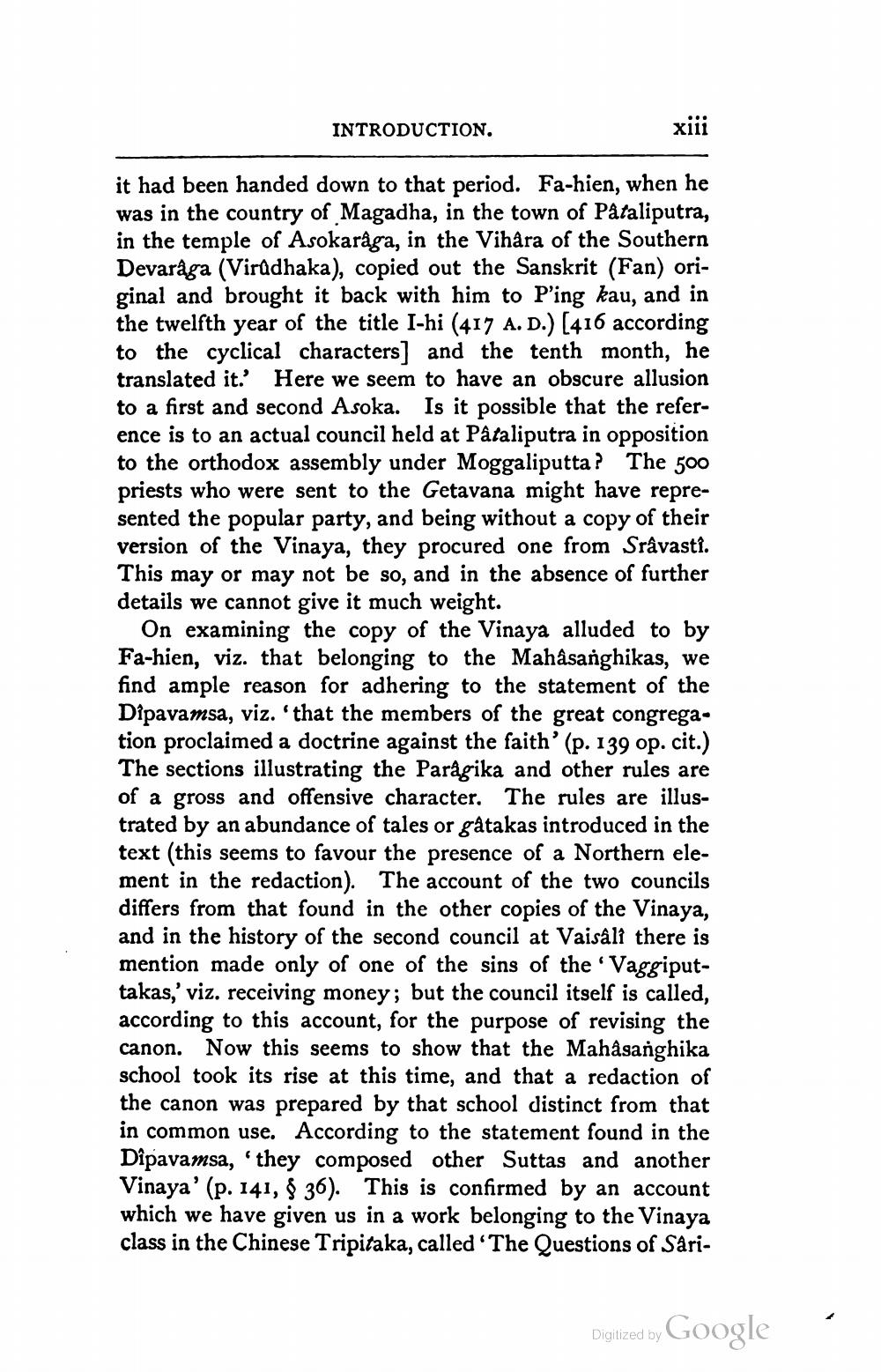________________
INTRODUCTION.
xiii
it had been handed down to that period. Fa-hien, when he was in the country of Magadha, in the town of Påtaliputra, in the temple of Asokaraga, in the Vihara of the Southern Devaraga (Viradhaka), copied out the Sanskrit (Fan) original and brought it back with him to P’ing kau, and in the twelfth year of the title I-hi (417 A. D.) (416 according to the cyclical characters and the tenth month, he translated it. Here we seem to have an obscure allusion to a first and second Asoka. Is it possible that the reference is to an actual council held at Pâtaliputra in opposition to the orthodox assembly under Moggaliputta? The 500 priests who were sent to the Getavana might have represented the popular party, and being without a copy of their version of the Vinaya, they procured one from Srâvasti. This may or may not be so, and in the absence of further details we cannot give it much weight.
On examining the copy of the Vinaya alluded to by Fa-hien, viz. that belonging to the Mahasanghikas, we find ample reason for adhering to the statement of the Dipavamsa, viz. 'that the members of the great congregation proclaimed a doctrine against the faith' (p. 139 op. cit.) The sections illustrating the Parågika and other rules are of a gross and offensive character. The rules are illustrated by an abundance of tales or gátakas introduced in the text (this seems to favour the presence of a Northern element in the redaction). The account of the two councils differs from that found in the other copies of the Vinaya, and in the history of the second council at Vaisâlt there is mention made only of one of the sins of the Vaggiputtakas,' viz. receiving money; but the council itself is called, according to this account, for the purpose of revising the canon. Now this seems to show that the Mahasanghika school took its rise at this time, and that a redaction of the canon was prepared by that school distinct from that in common use. According to the statement found in the Dipavamsa, 'they composed other Suttas and another Vinaya' (p. 141, $ 36). This is confirmed by an account which we have given us in a work belonging to the Vinaya class in the Chinese Tripitaka, called 'The Questions of Sari
Digitized by Google




